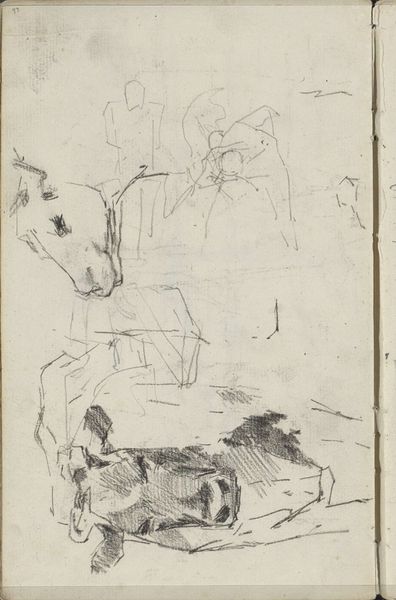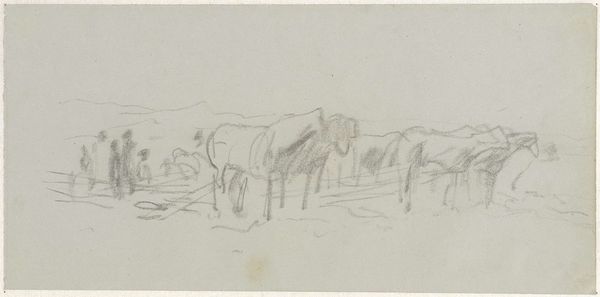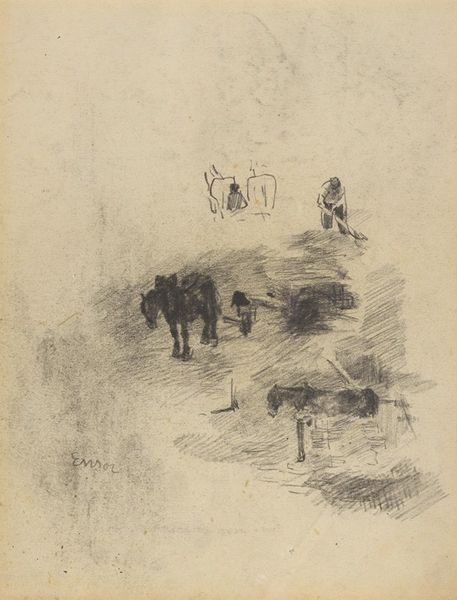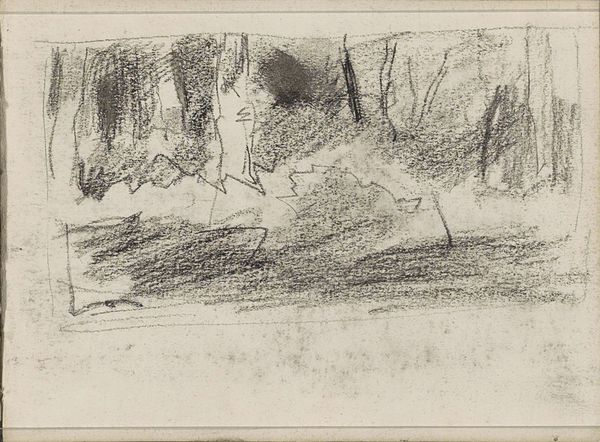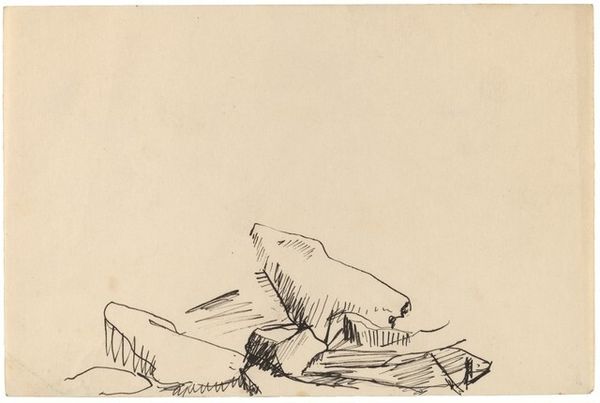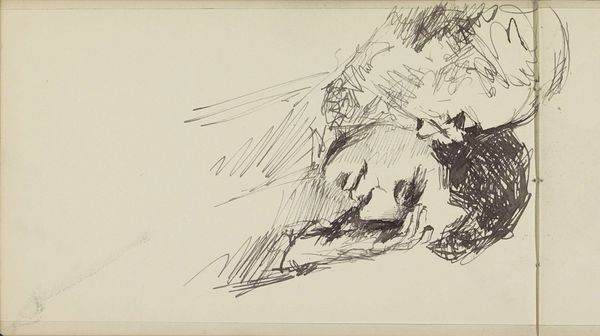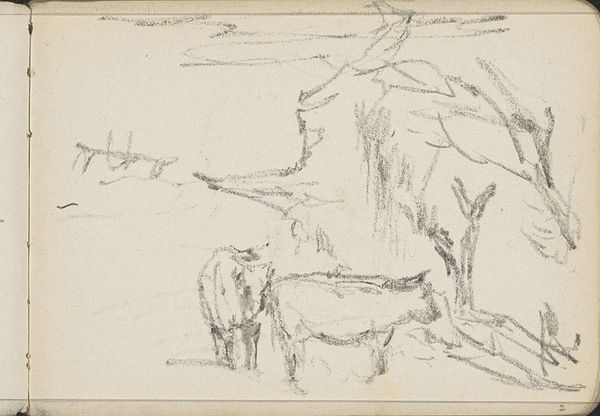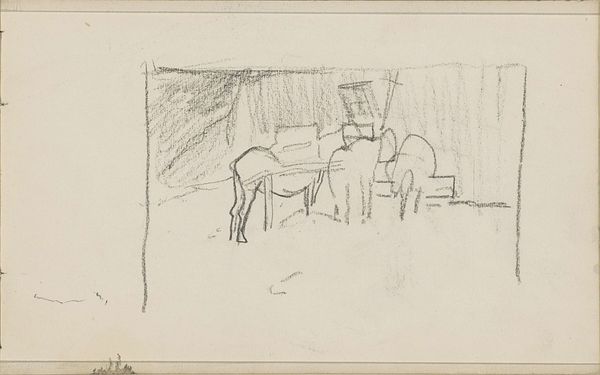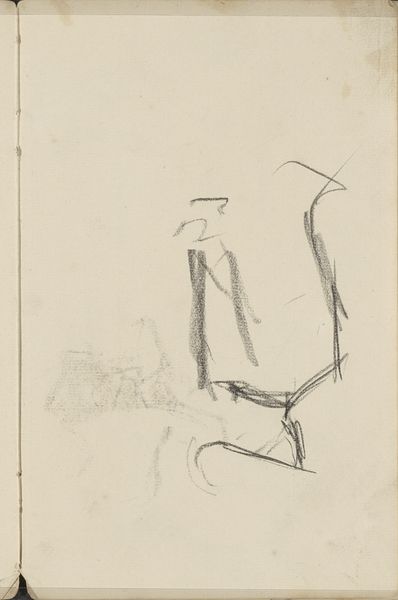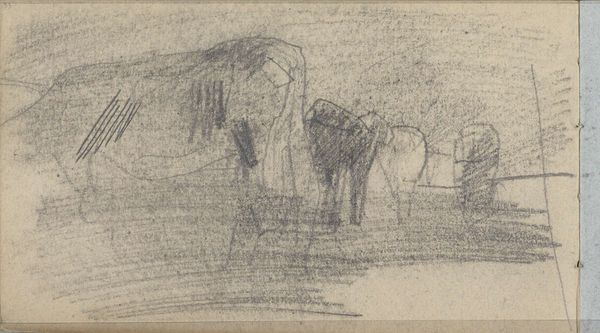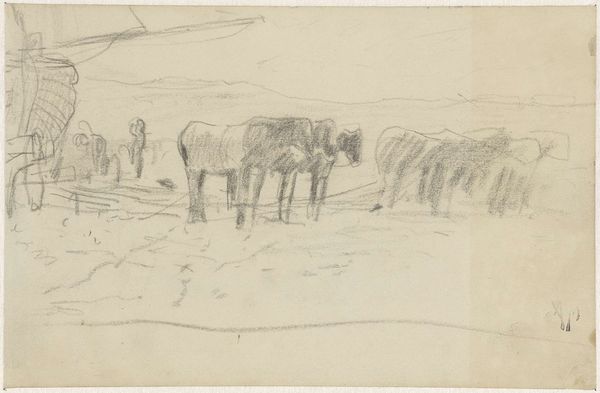
drawing, pencil, pastel
#
drawing
#
pencil sketch
#
landscape
#
pencil
#
pastel
Dimensions: 136 mm (height) x 178 mm (width) (bladmaal)
Editor: We're looking at "Et dyr der græsser" – “A Grazing Animal” – a pencil and pastel drawing by Niels Larsen Stevns, dating from between 1864 and 1941. There's a quiet simplicity to it; a lone animal rendered with very economical strokes. How do you interpret this work in the context of its time? Curator: The seeming simplicity is deceptive. Think about the Danish art scene during Stevns's life. He witnessed massive social changes – industrialization, urbanization. The image, seemingly a simple pastoral scene, speaks to the idealization of rural life that was popular at a time of dramatic shifts. Editor: So it's not just a straightforward landscape drawing? Curator: Not at all. It is also participating in the broader discussion around the value of nature in an increasingly industrial world. The art world was developing alongside a modernizing culture. What purpose did idyllic artworks serve in these societies? Is Stevns engaging with a romanticized view, or is he critiquing the social changes? Consider where it was shown, how it was viewed, and the institutional support surrounding it. These are key factors in understanding its significance. Editor: That’s a really interesting way to consider its context. It sounds like art institutions have considerable power to influence social perception of an artist’s rendering of nature. Curator: Absolutely. It wasn't simply "art for art's sake.” Patronage, galleries, critical reviews – all shaped how such seemingly innocent sketches were perceived and valued, impacting even how “nature” itself was valued by society. Editor: I'll never look at another landscape the same way! I hadn’t considered the influence of museums and institutions when looking at such works before. Curator: Precisely! Thinking about those aspects is vital for understanding the painting's message and cultural significance.
Comments
No comments
Be the first to comment and join the conversation on the ultimate creative platform.
